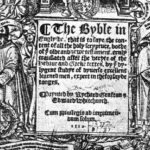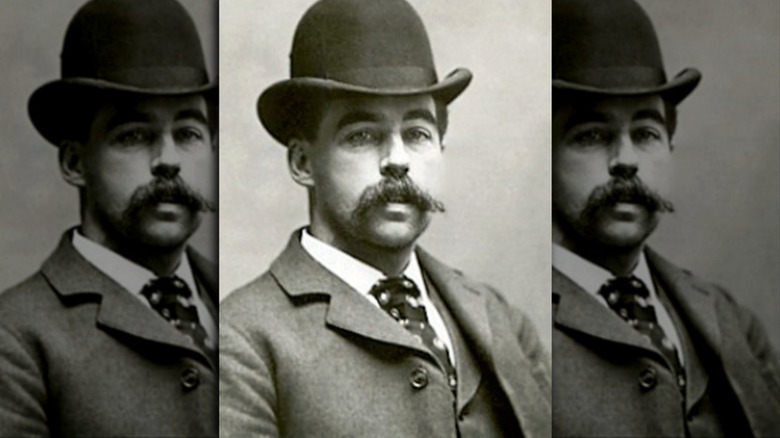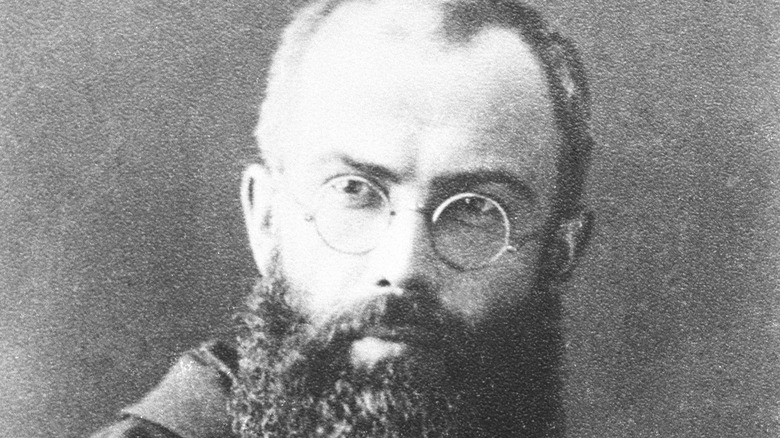
The Truth About The Hidden Notes In England’s Oldest Bible
An historian from Queen Mary University, London, discovered secret notes within England’s oldest printed Bible that shed light on the history of England’s Reformation. Using modern 3D x-ray imaging developed for use in dentistry, as announced via a news release from the university on Eureka Alert, Dr. Eyal Poleg uncovered handwritten annotations within one of just seven surviving copies of the Bible published in 1535 by order of King Henry VIII. The copy is housed at Lambeth Palace Library, and Henry VIII wrote the preface himself. Per Dr. Poleg, “We know virtually nothing about this unique Bible … outside of the surviving copies.”
The copy first appeared to be clean, but upon closer inspection, Dr. Poleg noticed that heavy paper had been pasted over several seemingly blank portions of the book. After consulting with Dr. Graham Davis, a specialist in 3D X-ray imaging at the University’s School of Dentistry, the men developed a technique to take images of the annotations and the printed text they replaced and separate them without harming the original text.
Notes remained hidden for centuries
The notes were copied from Thomas Cromwell’s “Great Bible” sometime between 1539 and 1549 and hidden in 1600. Per World History, Thomas Cromwell (above) was “chief minister” to Henry VIII, winning the king’s favor after assisting the king in annulling his marriage to his first wife, Catherine of Aragon, in order to marry Anne Boleyn. Cromwell orchestrated the English Reformation in which Great Britain broke away from the authority of the Catholic Church and the pope and established the Church of England, with Henry VIII as its head.
In an interview with the Daily Mail, Dr. Poleg translated some of the annotations and noted that they supported the idea that the Reformation was a gradual undertaking rather than a specific moment in time at which the Church of England entirely took over. “Until recently, it was widely assumed that the Reformation caused a complete break, a Rubicon moment when people stopped being Catholics and accepted Protestantism, rejected saints, and replaced Latin with English,” explained Dr. Poleg. In reality, conservative Latin and reformist English were, for a time, used together.
'From Royal text to recorder of thievery'
The period during which someone annotated the Bible was one of the wildest within the notorious reign of Henry VIII (shown above) and included the banishment of monasteries and the eventual beheading of Anne Boleyn.
In addition to the annotation, Dr. Poleg found a second surprise. Well after Latin Bibles would have been used within religious contexts in England, two men used this particular Bible to conduct a transaction. William Cheffyn of Calais and James Elys Cutpurse of London wrote up an agreement in which Cutpurse would pay 20 shillings to Calais or face a term in Marshalsea, a prison in Southwark. “Cutpurse” was a Medieval slang word for “pickpocket.” Dr. Poleg did some searching in archives and found that Cutpurse was executed in July of 1552, and told the Daily Mail, “Beyond Mr. Cutpurse’s illustrious occupation, the fact that we know when he died is significant.” This knowledge firmly places the Bible in history; it “found its way to lay hands, completing a remarkably swift descent in prominence from Royal text to recorder of thievery.”

How A Surfing Accident Changed John Wayne's Career

The Untold Truth Of The Seven Wonders Of The Ancient World

The Morbid Thing H.H. Holmes Sold To Medical Schools

Everything We Know About The Chippendales Arson Attacks

What You Might Not Know About Hitler's Wolf's Lair

Here's How The Tornado Scene In The Wizard Of Oz Was Actually Made

Why Was Job Tested By God, According To The Bible?

Here's What Happened To The Footage Of Steve Irwin's Death

The Real Reason Maximilian Kolbe Was Declared A Saint After Auschwitz

How Frances Perkins Changed Society After Witnessing Multiple Deaths

























